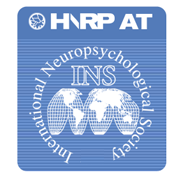Featured Publications
Featured Publications
Human immunodeficiency virus (HIV) and methamphetamine (METH) dependence are independently associated with neuronal dysfunction. The coupling between cerebral blood flow (CBF) and neuronal activity is the basis of many task-based functional neuroimaging techniques. We examined the interaction between HIV infection and a previous history of METH dependence on CBF within the lenticular nuclei (LN).
Age, education, and gender are the most common covariates used to define normative standards against which neuropsychological (NP) performance is interpreted, but influences of other demographic factors have begun to be appreciated. In developing nations, urban versus rural residence may differentially affect numerous factors that could influence cognitive test performances, including quality of both formal and informal educational experiences and employment opportunities.
The Beck Depression Inventory-I (BDI-I) is a self-report measure of depressive symptomatology that is widely used in both research and clinical settings. While the Spanish language version of the BDI-I is frequently used in the USA, there are currently no available guidelines to determine depressive symptomatology base rates in Spanish speaking populations using this instrument. In the present study, base rates of depressive symptoms and demographic influences on the BDI-I were measured in a non-clinical Spanish speaking population from the US-Mexico border region.
Sensory neuropathy (HIV-SN) is a common cause of pain in HIV-infected people. Establishing a diagnosis of HIV-SN is important, especially when contemplating opioid use in high-risk populations. However physical findings of HIV-SN may be subtle, and sensitive diagnostic tools require specialized expertise. We investigated the association between self-report of distal neuropathic pain and/or paresthesias (DNPP) and objective signs of HIV-SN. Data were obtained from the Central Nervous System HIV Antiretroviral Therapy Effects Research (CHARTER) study.
Several HNRC investigators presented at the 17th Conference on Retroviruses and Opportunistic Infections (CROI) held in San Francisco, California from February 16 through February 19, 2010. CROI provides a forum for translating laboratory and clinical research into progress against the AIDS epidemic. This meeting of the world's leading researchers reviews the science focused on understanding the prevention and treatment of HIV/AIDS and its complications.






